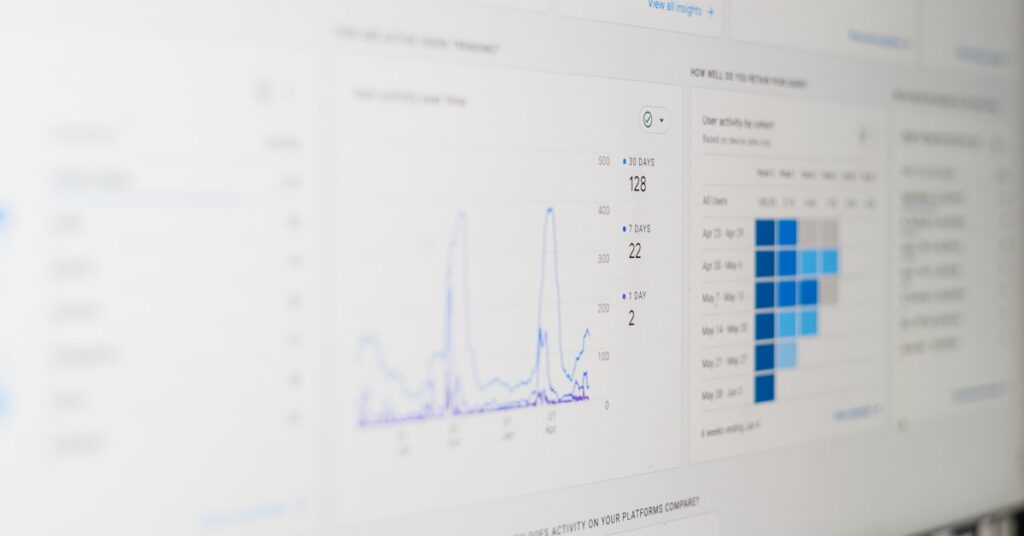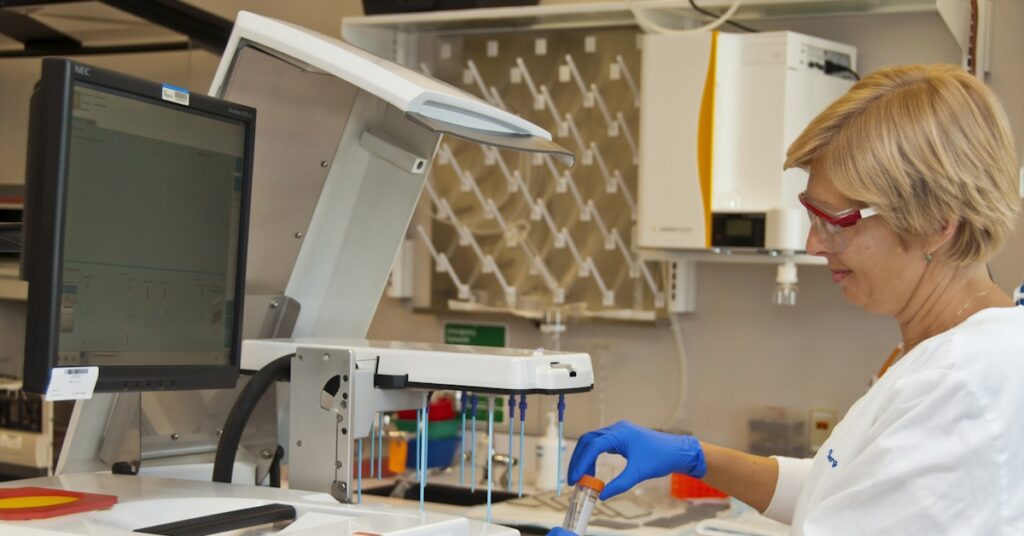Struggling to code your research data?
You’re drowning in interview transcripts and notes, spending more time organizing data than analyzing it. It’s a common research bottleneck.
This manual process not only slows you down but risks introducing inconsistencies into your findings, undermining the rigor of your hard-earned work.
The sheer volume of text from interviews, focus groups, and open-ended surveys can feel overwhelming. It makes finding those crucial themes seem almost impossible.
Speaking of handling large volumes of information, my guide on best data migration software helps ensure your data integrity during transfers.
But the right tool can change all that. It helps you streamline your entire analysis process and get to insights much faster.
In this article, I’m going to guide you through the best qualitative data analysis software available. We will explore tools designed to speed up your research.
You’ll discover how to efficiently code, memo, and identify themes, ultimately boosting your research credibility and saving you valuable time.
Let’s dive in.
Quick Summary:
| # | Software | Rating | Best For |
|---|---|---|---|
| 1 | Dedoose → | Academic & non-profit research | |
| 2 | ATLAS.ti → | Academic & non-profit research | |
| 3 | MAXQDA → | Global research institutions | |
| 4 | Quirkos → | Academic & non-profit researchers | |
| 5 | Lumivero → | Academic & enterprise users |
1. Dedoose

Struggling with complex qualitative data?
Dedoose helps you integrate qualitative and quantitative data, offering interactive visualizations to showcase your findings. This means you can streamline your research methodologies.
It lets you analyze interviews, focus groups, video, audio, and survey data, transforming scattered information into actionable insights for your research.
Here’s how Dedoose streamlines your research.
Dedoose, built by researchers for researchers, offers a cloud-based application for powerful data analysis and visualization. You can analyze nearly any data type, from interviews and social media to images and documents.
Its real-time collaboration feature enables multiple users to work on data simultaneously, maximizing collective insights with no hidden costs. Plus, its accessible design ensures compatibility across both Mac and PC devices, allowing you to access your projects anywhere, anytime.
Additionally, Dedoose adheres to high security and compliance standards, keeping your project data safe and never shared with third parties. This commitment to data security minimizes your decision anxiety and migration risks from legacy systems.
The result? Faster, more credible research.
While we’re discussing data tools, understanding best customer database software is equally important for unified data management.
Key features:
- Qualitative & Mixed Methods Data Support: Seamlessly integrate diverse data types like interviews, video, audio, and survey data for comprehensive analysis and deeper insights.
- Real-Time Collaboration & Cloud-Based Access: Collaborate with team members globally in real-time, accessing your projects from any Mac or PC device, enhancing productivity and research cycles.
- Interactive Visualizations & Filtering: Visualize complex data through charts, graphs, and matrices, allowing for in-depth exploration and systematic coding of your analysis.
Learn more about Dedoose features, pricing, & alternatives →
Verdict: Dedoose stands out as a powerful, cloud-based application for qualitative and mixed methods research. Its real-time collaboration, multimedia support, and interactive visualizations make it an excellent choice for academic institutions and non-profit research organizations seeking the best qualitative data analysis software to streamline their projects and enhance methodological rigor.
2. ATLAS.ti

Struggling to make sense of complex qualitative data?
ATLAS.ti offers AI-powered tools that dramatically reduce manual work, like AI auto-transcription and intentional AI coding. This means you can transform audio and video into actionable insights in seconds.
You can streamline rigorous methodologies with automated coding and thematic analysis, which empowers you to gain deeper insights through qualitative analysis. Plus, you retain full control and critical reflection.
Imagine unlocking research findings faster.
ATLAS.ti helps you import and organize all your files from any source, including text, audio, video, and social media data, into one central location. This lets you begin discovering valuable insights in hours, not days.
You can easily analyze and refine your data without prior knowledge, using codes to tag insights and embracing AI Coding for lightning-speed outcomes. ATLAS.ti integrates with OpenAI for AI-driven analysis, reducing your data analysis time by up to 90%. Additionally, the software supports real-time collaboration, allowing your entire team to work on projects together efficiently. The result is enhanced credibility and reduced time-to-insight for your research.
It’s all about efficient, insightful research.
Before diving deeper, you might find my analysis of best online course creation software helpful for educational purposes.
Key features:
- AI-Powered Tools: Leverage AI auto-transcription, conversational AI, and intentional AI coding to automate tasks and drastically reduce manual data analysis time.
- Comprehensive Data Handling: Import and organize diverse data formats like text, audio, video, survey, and social media data in one central platform for mixed-methods research.
- Seamless Collaboration & Support: Benefit from real-time team collaboration on projects, multi-platform access, flexible licensing, and 24/5 expert customer support.
Learn more about ATLAS.ti features, pricing, & alternatives →
Verdict: ATLAS.ti stands out as the best qualitative data analysis software for researchers and analysts, especially with its AI capabilities. It streamlines complex mixed-method data handling and advanced coding, making it ideal for academic and non-profit research, helping you achieve faster research cycles and enhanced credibility.
3. MAXQDA

Struggling with complex qualitative data?
MAXQDA provides powerful tools like automatic transcription and smart AI integration to streamline your research.
This means you can quickly move past manual hurdles, and dedicate more time to extracting meaningful insights from your data.
Ready to transform your analysis?
MAXQDA solves information overload by offering dedicated solutions for interview transcription and analysis, literature reviews, and mixed methods research.
It also ensures efficient coding, memoing, and thematic analysis through its advanced qualitative and mixed methods research capabilities for both Windows and Mac.
Additionally, with features like MAXQDA Analytics Pro for statistical data analysis and MAXQDA TeamCloud for secure, integrated teamwork, you can support cross-functional collaboration and produce stunning visualizations and reports.
Simplify your research workflow.
Key features:
- Automatic transcription and AI integration: Streamline your data input and enhance analysis with smart AI-driven functions, including a new multi-document AI chat and AI Assist.
- Comprehensive analysis capabilities: Conduct in-depth qualitative, quantitative text, and statistical data analysis, covering diverse methods from content analysis to focus group research.
- Visualization and reporting tools: Generate stunning visualisations and use a convenient report generator, ensuring your research results are report-ready and easily shareable.
Learn more about MAXQDA features, pricing, & alternatives →
Verdict: MAXQDA stands out as a strong contender for the best qualitative data analysis software, offering intuitive design and robust features like AI integration and team collaboration, trusted by institutions in 192 countries for rigorous and efficient research, leading to faster research cycles and enhanced credibility.
4. Quirkos

Struggling to make sense of complex qualitative data?
Quirkos simplifies your qualitative analysis, making it easy to understand your text data quickly. This means you can focus on the richness of your smaller qualitative datasets.
Your research demands robust tools, but often the software feels overly complicated, making the process of identifying patterns and themes feel like a time-consuming uphill battle.
Quirkos brings your qualitative data to life.
Here’s how Quirkos helps you streamline your research: it’s designed to be quick to learn and flexible for use with grounded theory, thematic analysis, or IPA. Plus, its cross-compatibility means you can import and export projects from other software like NVivo, MAXQDA, and Atlas.ti.
Additionally, Quirkos offers secure cloud collaboration, allowing unlimited simultaneous users to work on projects in real-time with live chat, and all your data is stored and backed up on secure servers. This platform freedom ensures an intuitive experience across Windows, Mac, Linux, and web browsers, including mobile devices.
The result is faster research cycles.
If you’re also looking for ways to protect your information, my guide on best Android data recovery software could be useful.
Key features:
- Intuitive Visualisation: See your qualitative data come to life with word clouds, overlap and correlation views, and theme hierarchies for quick pattern identification.
- Effortless Collaboration: Work with unlimited simultaneous users in real-time, sharing projects securely across any device with live chat and automatic cloud backups.
- Seamless Data Integration: Import text data from various sources like PDFs and Word, and easily transfer projects to and from other QDA software, including NVivo and MAXQDA.
Learn more about Quirkos features, pricing, & alternatives →
Verdict: If you’re seeking the best qualitative data analysis software that simplifies complex data without compromising rigor, Quirkos is an excellent choice. Its user-friendly interface, robust collaboration features, and cross-compatibility make it ideal for academic and non-profit researchers looking to accelerate their analysis and ensure data security.
5. Lumivero

Struggling with complex qualitative data? Find clarity.
Lumivero’s software helps you leverage qualitative and quantitative data, create insights, and find answers efficiently. This means easier mixed methods research.
It can transform complex data into clarity, empowering you to organize, analyze, and report findings for academic and enterprise success.
Ready for impactful insights?
Lumivero streamlines your research process, allowing you to aggregate and organize various data types, from video and audio to social media and surveys. This allows for seamless integration into your workflow.
Their tools also help with feedback analysis and focus group analysis, offering automated text searches, word clouds, and color highlights to reduce the manual slog of data processing. Plus, quantitative analysis uses Monte Carlo simulation to visualize scenarios.
Additionally, once you’ve analyzed your data, Lumivero enables seamless export to Microsoft Word or Excel. You can quickly incorporate notes, outlines, and multi-layered charts, generating a solid first draft ready for presentation or publication, complete with audit trails for methodological rigor.
Transform your data into impactful insights.
Key features:
- Aggregate and Organize: Easily gather and integrate diverse data types like video, audio, text, and survey responses to augment your insights.
- Analyze with Expert Methods: Conduct qualitative and sentiment analysis, mixed methods research, and use tools like automated text searches and Monte Carlo simulation.
- Present and Report: Export findings seamlessly to Microsoft Word or Excel, incorporating notes, charts, and bibliographies for compelling presentations and publications.
Learn more about Lumivero features, pricing, & alternatives →
Verdict: Lumivero provides robust solutions for researchers seeking the best qualitative data analysis software. Its ability to handle diverse data, streamline analysis with expert methods, and simplify reporting makes it ideal for academic and enterprise users, ensuring efficient research cycles and enhanced credibility.
6. Provalis Research

Struggling with specialized qualitative data analysis?
Provalis Research offers QDA Miner for unique qualitative data analysis, and WordStat for advanced content analysis. This means you can handle complex mixed-method data with ease.
If you’re drowning in conflicting vendor claims, Provalis Research provides a straightforward path to robust methodology. Your research team can gain clarity and streamline complex projects effectively.
Here’s how Provalis Research solves your data analysis puzzles.
Provalis Research offers ProSuite, bundling QDA Miner, WordStat, and SimStat, for comprehensive text analytics. This allows you to integrate numerical and textual data into a single project file.
You can seamlessly move back and forth between quantitative and qualitative data analysis, exploring relationships between text and numbers. This flexibility is perfect for researchers analyzing interview transcripts, open-ended questions, or social media data. You can import from many sources, automatically classify content, and utilize interactive visualization tools, ensuring faster research cycles and enhanced credibility.
Additionally, QDA Miner 2025 provides GenAI Assistance for researcher-driven thinking, making complex analysis more accessible.
Speaking of leveraging data for actionable insights, my guide on best marketing analytics tools explores how to boost ROI and enhance decision-making.
Ready to enhance your research credibility?
Key features:
- Integrated data analysis: ProSuite combines QDA Miner, WordStat, and SimStat for seamless integration of numerical and textual data in one project.
- Flexible coding and analysis: QDA Miner allows coding and annotation of text segments and images, with features to explore patterns, merge projects, and assess coder reliability.
- Advanced content exploration: WordStat enables importing from diverse sources, extracting entities, keywords, and themes, and automatically classifying content using topic modeling.
Learn more about Provalis Research features, pricing, & alternatives →
Verdict: Provalis Research stands out as the best qualitative data analysis software, offering powerful tools like QDA Miner and WordStat to streamline rigorous methodologies. Its ability to integrate numerical and textual data, coupled with features like GenAI assistance, significantly reduces time-to-insight for researchers at academic institutions and non-profits.
7. Thematic

Struggling with vast amounts of qualitative feedback?
Thematic transforms noisy open-ended text into accurate, layered insights using AI, streamlining your research process. This means you can save thousands of hours and empower your team to be customer-led.
You can uncover actions that will improve results for your customers and business faster than ever. The result: delivering actionable insights to every corner of your business.
Thematic solves the problem of information overload.
It helps you connect and combine feedback from online reviews, chat, surveys, and more with one-click integrations, even automatically redacting data for safety. Here’s how you can tag and theme your data: Thematic tags feedback for you with themes and sentiment as they emerge, quantifying repeated themes and allowing easy modification. Additionally, you can slice and dice customer feedback using filters like product, channel, region, theme, sentiment, or date, and drill down to raw feedback. Plus, Thematic enables you to push insights and trigger automated workflows across systems like Salesforce, lowering time to value by addressing issues 50% faster.
This tool helps your organization drive change with smarter insights.
Key features:
- Connect & Combine: Easily integrate and unify feedback from diverse sources like surveys, reviews, and chat with one-click integrations, ensuring secure and compliant data use.
- Tag & Theme: Leverage AI to automatically tag feedback with themes and sentiment, quantify repeated themes, and empower you with controls to easily modify or merge themes.
- Slice & Dice: Analyze customer feedback with powerful filters such as product, channel, or sentiment, enabling deep dives into raw data and automated alerts for emerging issues.
Learn more about Thematic features, pricing, & alternatives →
Verdict: Thematic stands out as the best qualitative data analysis software for researchers and analysts due to its AI-powered insights, significant time savings (e.g., DoorDash saved $200k+ in labor), and ability to transform unstructured feedback into actionable intelligence.
Conclusion
Stop drowning in interview transcripts.
Finding the right tool feels impossible. You’re trying to speed up research, but the software evaluation process itself, filled with marketing hype, is a bottleneck.
The right tool makes a massive difference. Research from QSR International shows that implementing CAQDAS tools can reduce analysis time by up to 40%. That’s a huge efficiency gain, turning research bottlenecks into real breakthroughs.
Here is my top recommendation.
From all my testing, Dedoose is the clear winner for your research organization. It’s built by researchers to specifically tackle the unique challenges of mixed-methods analysis.
For broader insights into business software that streamlines operations, my article on best conversational support software is worth exploring.
Its real-time collaboration and secure cloud access are true game-changers for academic teams. It’s the best qualitative data analysis software for enhancing methodological credibility and rigor.
I strongly suggest you start a free trial of Dedoose to see how its interactive features can streamline your entire workflow firsthand.
You’ll get to insights much faster.






